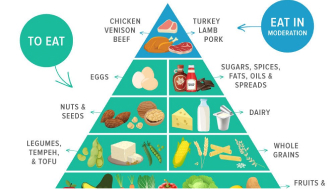What is Low Carb Diet
The best way to lower blood sugar and insulin levels is to reduce carb consumption, which may treat and possibly even reverse type 2 diabetes.
People often use low carb diets to promote weight loss and stabilize blood sugar levels. Though guidelines can vary, low carb diets typically limit foods high in carbs or added sugar.A low carb diet restricts carbohydrates, such as those found in pasta, bread, and sugary foods. It's high in protein, fat, and vegetables.
There are many different types of low carb diets. Studies show that they can cause weight loss and improve your health. Low carb diets have been associated with several health benefits. People often use them to support weight loss and manage blood sugar levels.
Generally, low carb diets limit foods high in carbs or added sugar, including sweets, starches, and refined grains. However, the foods you're permitted on a low carb diet can vary depending on your daily carb allotment. Even higher carb foods like fruits, starchy vegetables, and whole grains can fit into some low carb diets in moderation.
Here are a few of the most popular low carb eating patterns:
- Ketogenic (keto) diet: This low carb, high fat eating pattern limits daily carb intake to less than 10% of total calories, or around 20-50 g of carbs. The [Keto diet] also encourages using high fat ingredients like avocados, olive oil, full-fat dairy products, and coconut oil.
- Atkins diet: This low carb, high protein diet is typically divided into multiple phases, which vary in terms of your daily carb allowance. During the first phase of the [Atkins diet], carb intake is limited to 20-40 g per day, depending on which plan you choose. Over the duration of the diet, your intake gradually increases but typically doesn't exceed 100 g per day.
- South Beach diet: In addition to reducing carb intake, the [South Beach diet] encourages lean meats and heart-healthy fats. During the initial phase, grains and fruits are also off-limits. You'll gradually add these foods back into the diet during the second and third phases of the plan.
- Paleo diet:Designed to mimic the eating patterns of our hunter-gatherer ancestors, the [Paleo diet] encourages foods like meats, fruits, and vegetables. The paleo diet isn't intended to be a low carb diet, but it's naturally low in carbs as it eliminates many carb-rich foods, including grains, legumes, and dairy products.
- Dukan diet:The [Dukan diet] is a restrictive, low carb diet that's high in protein and low in fat. It encourages “pure protein” like lean meats. It's divided into four phases designed to help you reach your weight loss goals.
Benefits of Low Carb Diet
- Low-Carb Diets Reduce Your Appetite
- Low-Carb Diets Lead to More Weight Loss at First
- A Greater Proportion of Fat Loss Comes From Your Abdominal Cavity
- Triglycerides Tend to Drop Drastically
- Increased Levels of 'Good' HDL Cholesterol
- Reduced Blood Sugar and Insulin Levels
- May Lower Blood Pressure
- Effective Against Metabolic Syndrome
- Improved 'Bad' LDL Cholesterol Levels
- Therapeutic for Several Brain Disorders
Consequences:
- Studies indicate that cutting carbs can automatically reduce your appetite and calorie intake.
- Almost without exception, low-carb diets lead to more short-term weight loss than low-fat diets. However, low-carb diets seem to lose their advantage in the long term.
- A large percentage of the fat lost on low-carb diets tends to be harmful abdominal fat that is known to cause serious metabolic problems.
- Low-carb diets are very effective at lowering blood triglycerides, which are fat molecules that increase your risk of heart disease.
- Low-carb diets tend to be high in fat, which leads to an impressive increase in blood levels of “good” HDL cholesterol.
- The best way to lower blood sugar and insulin levels is to reduce carb consumption, which may treat and possibly even reverse type 2 diabetes.
- Cutting carbs leads to a significant reduction in blood pressure, which should reduce your risk of many common diseases.
- Healthy low-carb diets effectively reverse all five key symptoms of metabolic syndrome, a serious condition which increases your risk of heart disease and type 2 diabetes.
- When you eat a low-carb diet, the size of your “bad” LDL particles increases, which reduces their harmful effects. Cutting carbs may also reduce the number of total LDL particles in your bloodstream.
- Low-carb and keto diets have proven beneficial in treating epilepsy in children and are being studied for their effects on other brain conditions.
Foods to Eat
A low carb diet should include a variety of minimally processed, low carb foods, including protein sources, non-starchy vegetables, and high fat dairy products.
Here are some of the foods to eat on a low carb diet:
- Eggs: whole eggs, egg whites, egg yolks
- Non-starchy vegetables: spinach, broccoli, cauliflower, carrots, asparagus, tomatoes
- Lower carb fruits: oranges, blueberries, strawberries, raspberries, blackberries
- Nuts and seeds: almonds, walnuts, sunflower seeds, chia seeds, pistachios
- High fat dairy: cheese, butter, heavy cream, greek yougurt
- Fats and oils: lard, avocados, avocado oil, olive oil, coconut oil
If you are trying to reach or maintain a moderate weight limit your intake of higher calorie foods like cheese and nuts. It's easy to overeat them.
Foods to include in moderation
Unless you're following a very low carb or keto diet, you may also want to include small amounts of the foods listed below:
- Starchy vegetables: potatoes, sweet potatoes, yams, peas, corn
- Higher carb fruits: bananas, pineapples, mango, and many others
- Legumes: lentils, black beans, pinto beans, chickpeas
- Higher carb dairy: milk and full-fat yogurt
What's more, you can have the following in moderation, if you want:
- dark chocolate with at least 70% cocoa
- dry wines with no added sugar or carbs
Dark Chocolate is high in antioxidants and may provide health benefits if you eat it in moderation. However, be aware that both dark chocolate and [alcohol] may hinder weight management if you eat or drink too much.
Beverages
In addition to what you're putting on your plate, it's also important to consider what you're drinking while following a low carb diet.
Because many beverages can be high in carbs and calories, consider choosing drinks free of added sugar whenever possible.
A few examples of low carb beverages include:
- coffee
- tea
- water
- sugar-free carbonated beverages, like sparkling water
Warning: Depending on your daily carb allowance, you may need to limit or avoid high carb foods like sweet snacks, refined grains, sugar-sweetened beverages, and highly processed food products.
Recipes
- Ground beef with sliced bell peppers
- Bacon-wrapped mini meatloaves
- Paleo lettuce wrap
- Moroccan meatballs
- Healthy Eggs Benedict
- Primal chili cheese dogs
- Low carb salads
- Bacon, egg, avocado and tomato salad
- Chef salad ham cups
- BLT chicken salad
For Images:
Was this article helpful?
Similar Articles


